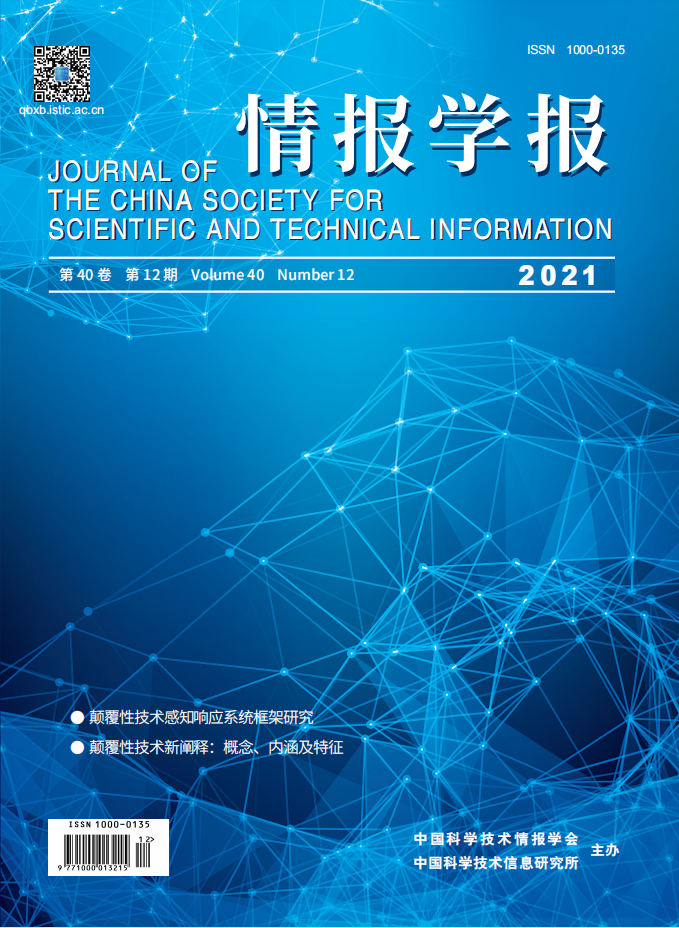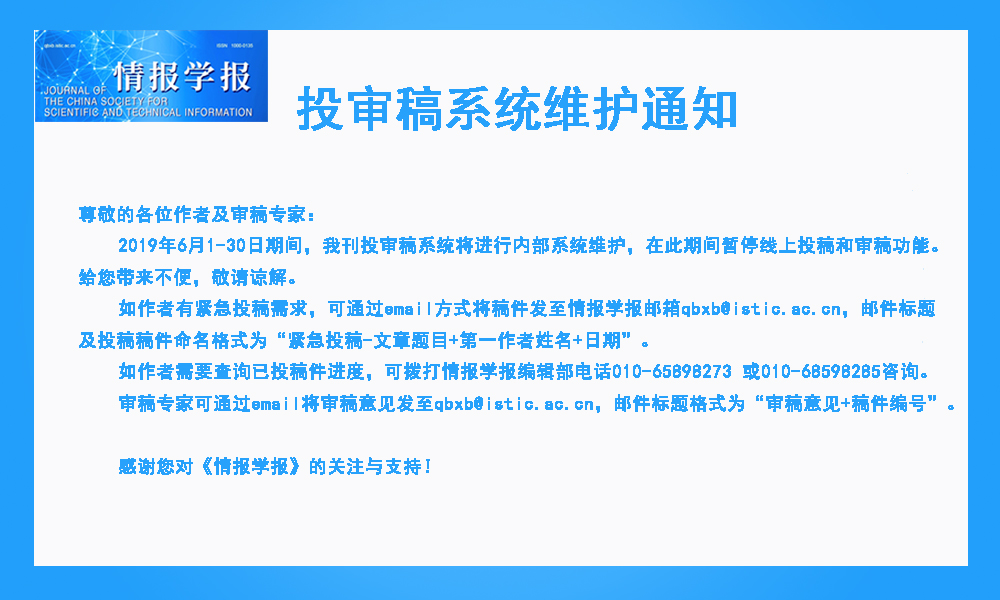 |
|
|
|
|
|
|
1248 |
Research on National Defense S&T Intelligence Work Development in a Complex Information Environment Hot! |
|
 |
Zhao Xiang'an, Lei Shuai, Tang Shanhong, Li Xiaosong |
|
|
DOI: 10.3772/j.issn.1000-0135.2022.12.003 |
|
|
National defense S&T intelligence work plays a key role in innovation and strategic management. This study analyzes the complex information environment of national defense S&T intelligence in terms of perception, cognition, and service. Additionally, it examines the impact of national defense S&T intelligence work in a complex information environment, and proposes a design for it using the SDMWT-SP mode, and describes the constituent elements such as Scene, Data, Model, Wisdom, Tool, Standard Procedure. In order to increase the focus on user needs, improve overall coordination, strengthen human-computer deep coordination, and accomplish better tool development, this paper proposes countermeasures and suggestions to accelerate the promotion of national defense S&T information work in a complex information environment. The findings of this study can enable a deeper understanding of the national defense S&T intelligence work in a complex information environment, and provide a reference for further promotion of related work. |
|
|
2022 Vol. 41 (12): 1248-1254
[Abstract]
(
526
)
HTML
(56 KB)
PDF
(1098 KB)
(
378
) |
|
|
|
1255 |
An Explanatory Dissection of the Theory and Practice for WIKID Exploitation Hot! |
|
 |
Wang Yanfei, Du Yuanqing |
|
|
DOI: 10.3772/j.issn.1000-0135.2022.12.004 |
|
|
Putting intelligence in a form that facilitates awareness and delivering intelligence rapidly and effectively are important topics of intelligence studies and practices. This paper clarifies the meaning, academic origin, object content, research framework, and the specific paths and methods of “wisdom, intelligence, knowledge, information, and data (WIKID)” exploitation research. Excellent WIKID exploitation relies on, among other things, the professional capabilities to express and present intelligent content. This paper concludes that the main content of WIKID exploitation research includes signage rules, meme techniques, and exploitation tools; the core concepts of WIKID exploitation include memes, evidence or facts, and critical thinking; the WIKID exploitation research is an indispensable component in the exploration of the theoretical system of intelligence studies. |
|
|
2022 Vol. 41 (12): 1255-1265
[Abstract]
(
216
)
HTML
(100 KB)
PDF
(1998 KB)
(
585
) |
|
|
|
1266 |
Research on Patterns and Methods for Knowledge Construction and Reuse in a Complex Information Environment Hot! |
|
 |
Zhao Zhiyun, Liu Yao, Zhu Lijun, Wu Xinyu |
|
|
DOI: 10.3772/j.issn.1000-0135.2022.12.005 |
|
|
The current complex information environment poses new challenges to scientific and technological intelligence research, as large-scale digital resources in open-source intelligence require the guidance of advanced knowledge organization and reuse patterns and methods to support demand-oriented scientific and technological intelligence services. Although many enterprises and institutions in various industries have studied the construction of large-scale digital resources and service platforms, these constructions and platforms remain inadequate in handling multiple business requirements and providing personalized services, which can be mainly manifested in two core problems. First, the existing expensive knowledge system construction scheme performs poorly in solving problems and meeting personalized requirements, and it lacks the ability to use existing knowledge to quickly respond to and solve problems. Second, existing studies focus on semantic structure and knowledge base construction, as well as system function design of service platforms, which shows an absence of business-driven and problem-driven capabilities, leading to a clear rift between knowledge organization and knowledge utilization. Thus, this study first analyzes the business requirements, guided by the business organization model theory and method. Through the research on the automatic construction of business models, this paper forms a personalized business model on the basis of resource characteristics. Given the lack of flexible resource construction solutions and low data utilization in the current knowledge organization model, this paper establishes an efficient and agile knowledge organization mechanism, using technical means, such as complete analysis of individual articles and self-organization of multiple articles, to rapidly analyze resources, providing technical support for the knowledge services in practical projects. Taking the new service platform and specific services based on SaaS (software as a service) and PaaS (platform as a service) as an example, this paper establishes a knowledge reuse pattern on the basis of technology and engineering to effectively solve the practical problems of knowledge system construction and reuse. |
|
|
2022 Vol. 41 (12): 1266-1279
[Abstract]
(
281
)
HTML
(87 KB)
PDF
(6746 KB)
(
241
) |
|
|
| Intelligence Theories and Methods |
|
|
|
| Intelligence Technology and Application |
|
|
1294 |
Research on the Construction of Major Emergencies Picture from a Philosophical Perspective Hot! |
|
 |
Zhang Haitao, Zhang Chunlong, Luan Yu, Zhang Xinrui |
|
|
DOI: 10.3772/j.issn.1000-0135.2022.12.007 |
|
|
Based on a rejuvenation strategy, China is in a period of profound changes unseen in a century. Subsequently, from the perspective of national security, there is a need to coordinate national development and security, uphold the concept of science, and develop essential laws of complex things. There is also the need to deconstruct and construct in parallel, putting the core idea of “Dao, Fa, Shu, Qi, and Shi” from traditional Chinese philosophy into practice during major emergencies. Simultaneously, emergency research should be transformed using the “purpose and concept, perception and follow, deconstruction method, presentation carrier, and vision and prospect.” Combining philosophy with the underlying logic can explain the internal laws and logic of the development and evolution of major emergencies and form a macro cognitive framework as an overview of major emergencies. The major emergencies perspective is a human perceptual perception of major emergencies, presenting the cognitive panorama of major emergencies using intelligence and providing ideas for the systematic cognition and research of major emergencies so that the emergency management of major emergencies through intelligence-decision can be promoted. This will allow intelligence and wisdom to modernize the national governance system and increase governance capacity. |
|
|
2022 Vol. 41 (12): 1294-1304
[Abstract]
(
366
)
HTML
(93 KB)
PDF
(4315 KB)
(
308
) |
|
|
|
1305 |
Application of Game Theory in Competitive Intelligence Hot! |
|
 |
Hou Jingchuan, Zhang Chenxu |
|
|
DOI: 10.3772/j.issn.1000-0135.2022.12.008 |
|
|
As a rigorous, standardized, and quantitative interactive decision-making theory, game theory is naturally suitable for competitive strategy and competitive intelligence research. The domestic and foreign literature on the application of game theory to competitive intelligence research can be roughly divided into two categories: game theory analysis on competitive intelligence and competitive intelligence analysis based on game theory. The former corresponds to the competitive intelligence research under the “process” perspective, which refers to the use of game theory to analyze the various processes of corporate competitive intelligence activities to help improve the efficiency of intelligence work. The latter corresponds to the competitive intelligence research under the “product” perspective, which refers to the use of game theory to analyze the specific competitive decision-making problems faced by enterprises, and produce practical and usable intelligence products to help enterprises succeed in competitions. The former focuses on the three major links of competitive intelligence including acquisition, identification, and cooperation, while the latter focuses on the three aspects of competitive intelligence including value, strategy, and case analyses. Scholars at home and abroad have different research perspectives and their output results have their own focus points. The results of foreign research are more pragmatic, and domestic applied research achievements are mostly published abroad. To a certain extent, this points out the direction for the follow-up development of the field. |
|
|
2022 Vol. 41 (12): 1305-1313
[Abstract]
(
463
)
HTML
(99 KB)
PDF
(1096 KB)
(
464
) |
|
|
|
1314 |
Examining Users' Conversation Interaction Structure and Quality in the Chinese Online Academic Community Hot! |
|
 |
Zhang Min, Jiang Guanlan, Ding Heng |
|
|
DOI: 10.3772/j.issn.1000-0135.2022.12.009 |
|
|
This study elaborates the sequence structure and interaction quality of users' conversation interaction in Muchong Forum, with the aim of discovering the patterns of academic users' conversation interactions and providing references for the improvement of interaction services, thereby enhancing the value of the academic community in supporting users' scientific research work. Based on qualitative content coding and statistical and sequence analyses of 1485 posts and 7099 replies collected from five disciplines, including Inorganic Nonmetallic, Quantum Chemistry, Information Science, Medical, and Humanities and Social Sciences, this study found that question clarification, answer expansion, and question negotiation corresponded to the three conversation modes. The user knowledge construction of each discipline was mainly based on knowledge divergence and knowledge connection in this community. The answer expansion and question negotiation sequence with reciprocal interaction characteristics were more likely to achieve a higher level of knowledge interaction quality. Due to its protean nature, the dynamics of academic communities' conversation process are difficult to capture in detail. Therefore, the empirical research settings may be elaborated further in future research by drawing on the potential of novel methods and perspectives, such as digital conversation analysis. |
|
|
2022 Vol. 41 (12): 1314-1328
[Abstract]
(
271
)
HTML
(163 KB)
PDF
(2512 KB)
(
513
) |
|
|
|


